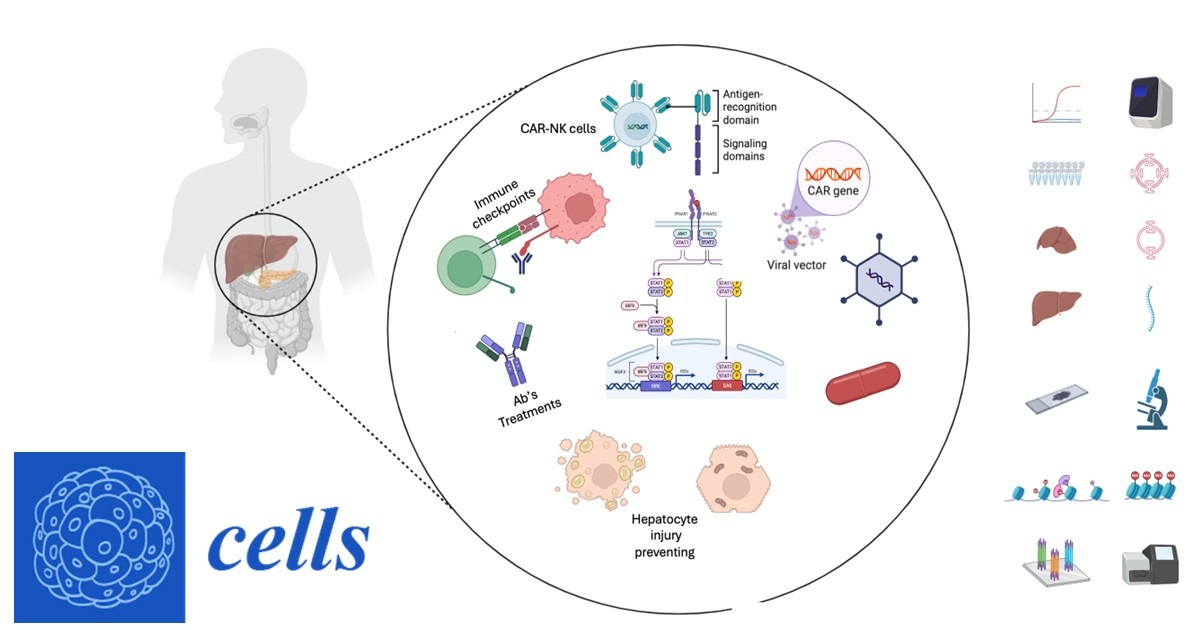- 5.2Impact Factor
- 10.5CiteScore
- 16 daysTime to First Decision
Molecular Mechanisms of Fibrosis in Chronic Liver Diseases
Special Issue Information
Dear Colleagues,
Liver fibrosis is a dynamic pathological process marked by excessive extracellular matrix (ECM) accumulation in response to chronic liver injury. It commonly arises from metabolic dysfunction-associated steatohepatitis (MASH), viral hepatitis, alcohol misuse, and autoimmune or cholestatic liver diseases. At the molecular level, fibrosis is mediated by the sustained activation of hepatic stellate cells (HSCs), which transdifferentiate into myofibroblast-like cells that secrete collagenous and non-collagenous ECM proteins, leading to progressive disruption of liver structure and function.
The progression of liver fibrosis is governed by complex interactions involving cytokine signaling, immune cell crosstalk, oxidative stress, and metabolic reprogramming. Recent research highlights the crucial roles of immune–metabolic pathways, gut–liver axis dysregulation, and epigenetic modifications in modulating fibrogenic activity. Emerging technologies, such as single-cell transcriptomics and spatial omics, are further unraveling the heterogeneity and regulatory networks within the fibrotic liver microenvironment.
This Special Issue aims to explore the molecular mechanisms underlying hepatic fibrosis and their translational implications. We welcome original research articles, reviews, and perspectives that provide insights into fibrosis biology, biomarker discovery, and antifibrotic therapies. We look forward to your valuable contributions.
Dr. Ahmad Salhab
Dr. Regina Golan-Gerstl
Dr. Ihab Ansari
Guest Editors
Manuscript Submission Information
Manuscripts should be submitted online at www.mdpi.com by registering and logging in to this website. Once you are registered, click here to go to the submission form. Manuscripts can be submitted until the deadline. All submissions that pass pre-check are peer-reviewed. Accepted papers will be published continuously in the journal (as soon as accepted) and will be listed together on the special issue website. Research articles, review articles as well as short communications are invited. For planned papers, a title and short abstract (about 250 words) can be sent to the Editorial Office for assessment.
Submitted manuscripts should not have been published previously, nor be under consideration for publication elsewhere (except conference proceedings papers). All manuscripts are thoroughly refereed through a single-blind peer-review process. A guide for authors and other relevant information for submission of manuscripts is available on the Instructions for Authors page. Cells is an international peer-reviewed open access semimonthly journal published by MDPI.
Please visit the Instructions for Authors page before submitting a manuscript. The Article Processing Charge (APC) for publication in this open access journal is 2700 CHF (Swiss Francs). Submitted papers should be well formatted and use good English. Authors may use MDPI's English editing service prior to publication or during author revisions.
Keywords
- liver fibrosis
- MASH
- immune checkpoints
- epigenetic regulation
- hepatic stellate cells (HSCs)
- antifibrotic therapy
- molecular mechanisms
- inflammation
- ROS

Benefits of Publishing in a Special Issue
- Ease of navigation: Grouping papers by topic helps scholars navigate broad scope journals more efficiently.
- Greater discoverability: Special Issues support the reach and impact of scientific research. Articles in Special Issues are more discoverable and cited more frequently.
- Expansion of research network: Special Issues facilitate connections among authors, fostering scientific collaborations.
- External promotion: Articles in Special Issues are often promoted through the journal's social media, increasing their visibility.
- e-Book format: Special Issues with more than 10 articles can be published as dedicated e-books, ensuring wide and rapid dissemination.

